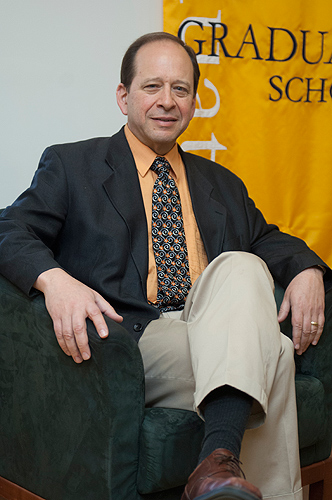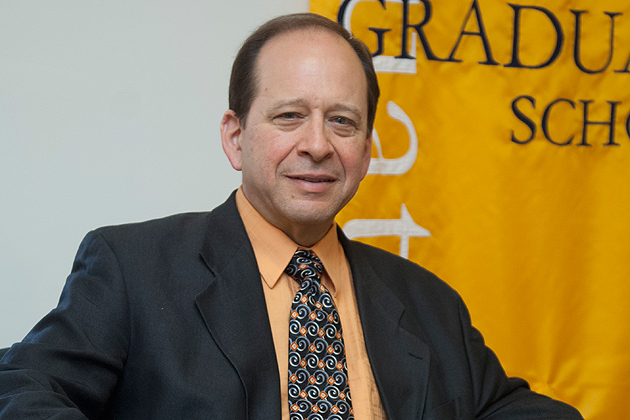
Kent Holsinger has been a field biologist, a mathematical modeler, an expert on plant mating systems, and a national advocate for teaching the theory of evolution.
He has been a leader in the University Senate, president of three national biological societies, and recently, interim vice provost for graduate education and dean of the graduate school.
And now, he is a Board of Trustees Distinguished Professor of Ecology and Evolutionary Biology. Holsinger was one of two professors chosen this year for the University’s highest faculty honor (the other is Lynne Healy, professor of social work), and the 28th faculty member in the College of Liberal Arts and Sciences chosen for the honor.
You might say that, like the subject he teaches, he has evolved a lot.
Or, as Holsinger says a long-time colleague describes him, “I’m just interested in a lot of things.”
In recent years, he has become a runner and a blogger. He is an advocate for open-access publishing, and for the past decade has been chairman of the board of BioOne, an online database that includes the full text of more than 125 scientific publications.
He is concerned with the global issue of climate change, but he also takes it to a personal level, driving a hybrid Honda Civic in the hopes of doing what he can to alleviate global warming.
He was born in Oregon, grew up in Idaho, and identifies himself as a Westerner. Yet he’s been at UConn for 26 years, joining the faculty here after earning a Ph.D. at Stanford and being a postdoctoral researcher there and at Berkeley.
With so many interests, he’s hard to pin down, but here’s how he describes himself: a plant evolutionary geneticist who develops statistical methods to analyze genetic data.
That sounds like a desk job at a computer, but this summer he’ll return to South Africa for his fifth season in the field, collecting leaf samples as part of a large NSF-funded project to study how plants adapt to climate change.
Four biologists from UConn, led by Carl Schlichting, professor of ecology and evolutionary biology, are studying the Proteus, an extraordinarily diverse plant that is the national flower of South Africa and the symbol of the nation’s cricket team (“passion and pride blossom unwiltingly in the sun” is the way the team describes itself and the flower).
The scientists are studying why there are so many different kinds of Protea – more than 9,000 species in an area of southwestern South Africa about the size of Maine.
While he has become much more involved in fieldwork in the past four or five years, he is also developing new statistical methods to analyze the data the biologists collect.
“More and more people are finding, in order to answer the questions they want to answer with the data they collect, you need to develop your own statistical models,” he explains.
That statistical bent is one of the strengths of the Department of Ecology and Evolutionary Biology, he points out. Holsinger has a longtime collaboration with Dipak Dey, Board of Trustees Distinguished Professor of Statistics.
As an undergraduate in biology at The College of Idaho, Holsinger didn’t realize that the mathematical or statistical analyses that he does now even existed, he says. And he only discovered population genetics in graduate school at Stanford.
His love of biology began in childhood – he was an avid fisherman and spent a lot of time outdoors, backpacking in central Idaho. He missed seeing the first moon landing because he was on a backpacking trip with his father, he recalls.
But an interest in spreading the news about science remains with him. He tells his graduate students – he has advised 10 graduate students, including nine Ph.D.s – that their research isn’t done until they communicate it to other scientists.
Communicating research to the public is another step he has encouraged, contributing to EEB faculty member Margaret Rubega’s courses on how to communicate science to non-scientists.
Holsinger himself, as president of the American Institute of Biological Sciences, was active in furthering the public’s understanding – and steering people away from misconceptions – about the theory of evolution and its central role in biology education.
He believes scientists, particularly at a public institution, have an obligation to communicate with the public.
“They [the public] deserve to know what it is we’re doing,” he says, “and they need to know that what we’re doing is valuable.”



